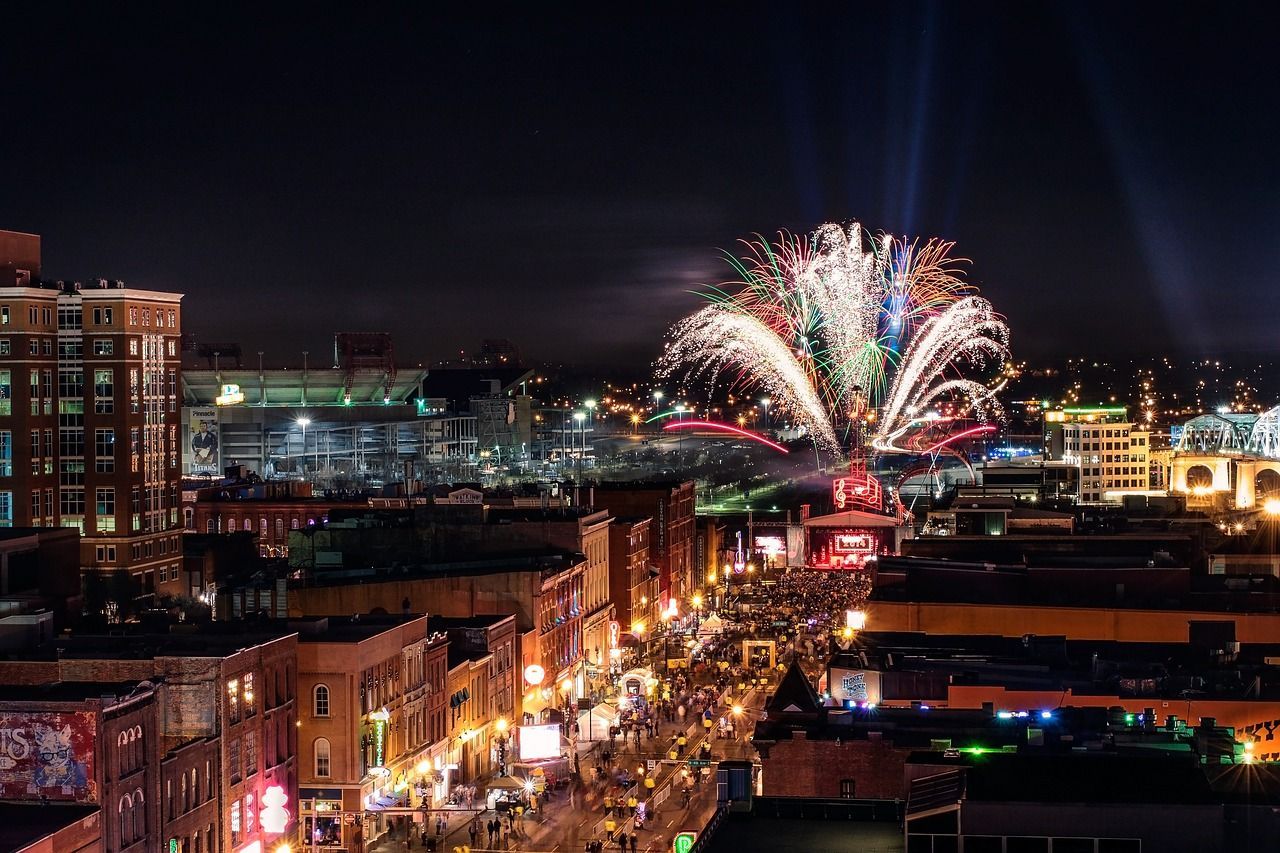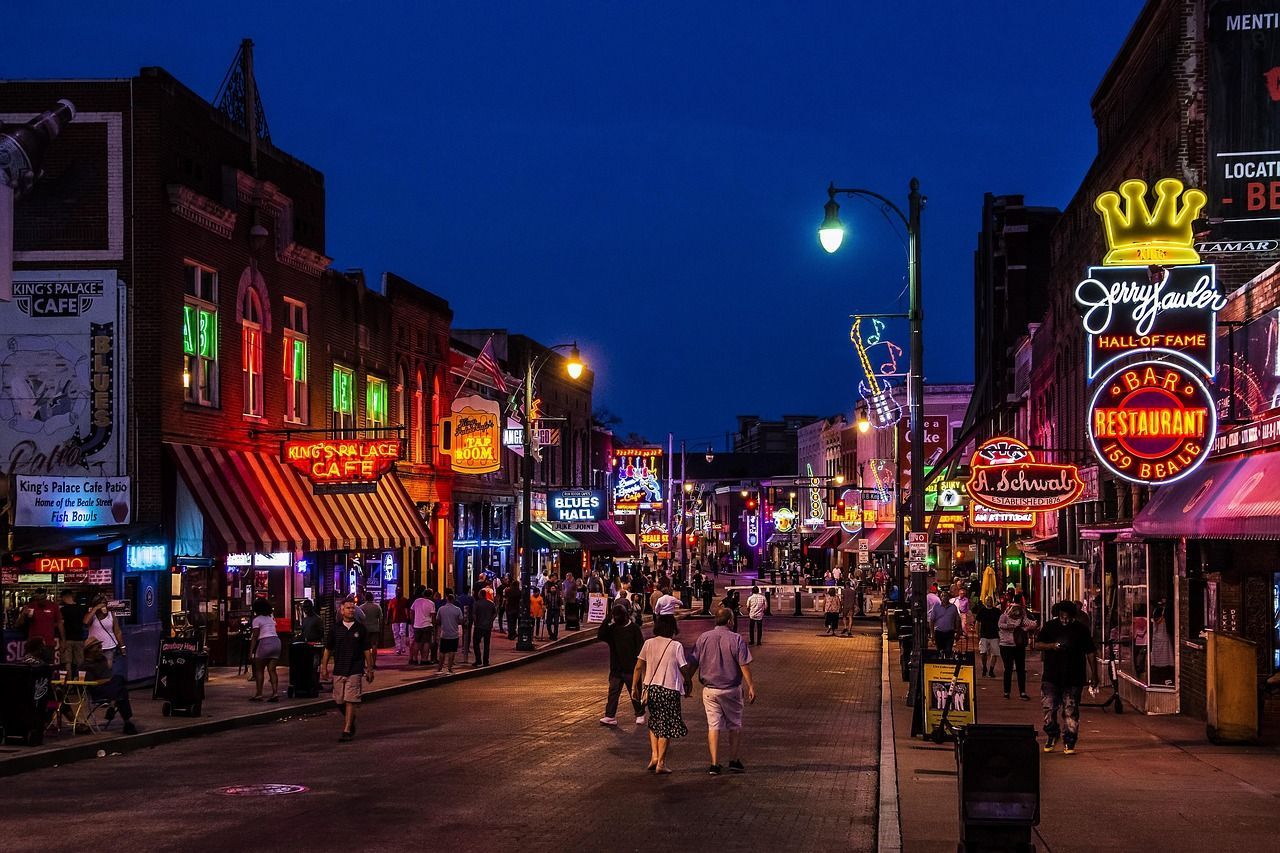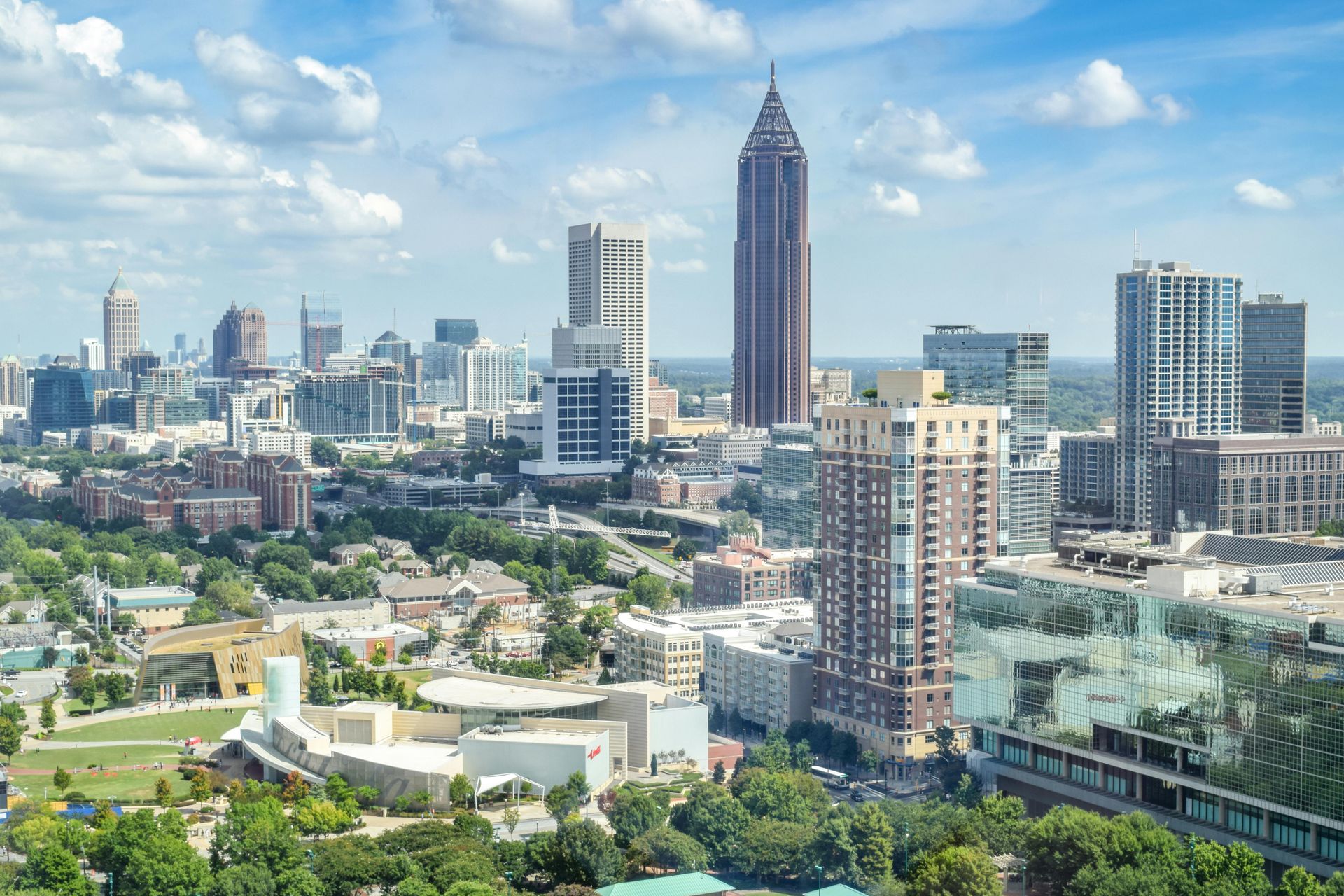A road trip from San Francisco to The Grand Canyon takes you from one of America’s most famous cities, to one of the world’s most stunning natural attractions.
A 910 mile road trip from San Francisco to Grand Canyon National Park takes you from a high-tech metropolis, through the states of California, Nevada and Arizona, past some of the most stunning deserts, forests, mountains, and towns in the entire United Sates.
So, if you want to make this incredible journey and experience all the sights along a route affectionately referred to as the “Majestic Mountain Loop” for yourself, I strongly suggest you read on.
A Road Trip From San Francisco To The Grand Canyon: How Far Is It, What Is The Best Route, & How Long Will It Take To Get There?
The fastest route for a road trip from San Francisco to Grand Canyon National Park covers 790 miles and takes 11 hours and 45 minutes to drive, most of which is spent on the I-5 and I 40. However, in our opinion the best route for a road trip from San Francisco to Grand Canyon National Park covers 910 miles and takes 14 hours and 45 minutes to complete.
You start by joining the I-80 where it begins in Downtown San Francisco and driving to Oakland across the San Francisco – Oakland Bay Bridge. When you reach Exit 8B take it and begin heading south on I-580. After 55 miles the road will veer right at Exit 65, but you will keep heading straight to merge onto I-205, which you will stay on his for its entire 13 mile duration.
When it merges with the I-5 take Exit 461 to join California State Route 120 where it begins and head east, before using Exit 6 to join California State Route 99 going south. You will be on this for some 220 miles, at which point you will use Exit 24 in Bakersfield, California to join California State Route 58 and head east. When you reach Exit 167 near Mojave, you then go north on California State Route 14.
Veer right onto Redrock Randsburg Road and follow it until you near the town of Garlock, at which point you will go left on Garlock Road. This will eventually merge with US Route 395, which you will take a short way north before turning right onto Searles Station Cutoff. When this ends, go north on Tirona Road, and then right on California State Route 178.
This will periodically change names but continue following it until you near the town of Panamint Springs, at which point you will turn right onto California State Route 190, and this will take you all the way to Death Valley Junction. When the road ends, go straight across the junction onto State Line Road and follow it into Nevada, where it will become Bell Vista Road, which you will continue to follow.
When you reach Nevada State Route 160, take it south and follow it all the way to Las Vegas. Merge onto I-215 and go east, then use Exit 1 to take I-11 southeast. This will become US Route 93 as you enter Arizona but continue following it until you reach the town of Kingman, at which point you will head east on I-40. Take this all the way to Williams, Arizona, where you will use Exit 165 to go north on Arizona State Route 64, which will take you the remaining 60 miles to Grand Canyon National Park.
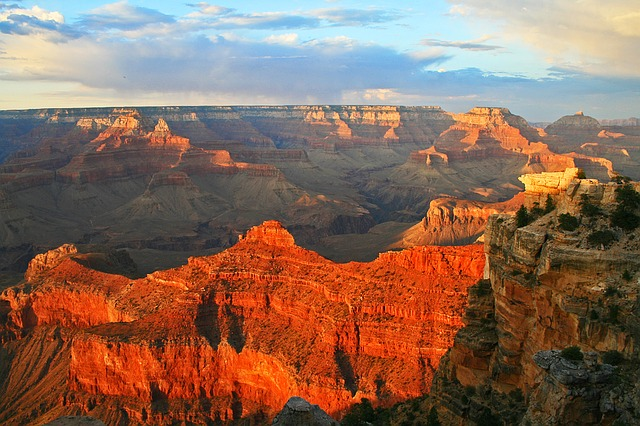
Best Place To Stop On A Road Trip From San Francisco To The Grand Canyon – Las Vegas, Nevada
With a driving time of almost 15 hours on a road trip from San Francisco to the Grand Canyon, most people will want to break up the driving, especially if they want to make the trip as enjoyable as possible. While there are plenty of great places to stop and do just that along our route, one option that deserves a longer visit that perhaps anywhere else is Las Vegas, Nevada.
The largest, most populous city in the state, it sits at its southern point, near the borders with Arizona and California. First established as a city in 1905, in a remote Mojave Desert basin, it boomed into life in the late 1930s, due to the legal casino gambling and a constant flow of tourists and workers travelling to the Grand Canyon and newly built Hoover Dam.
Now a thriving metropolis filled with casinos, bars, restaurants, hotels, and round the clock entertainment establishments hosting everything from cabarets to international artists, it is a place unlike anywhere else and a destination that simply has to be experienced, which it is by more than 42 million people each year.
There are even opportunities for nature lovers too, such as those who would be interested in the Grand Canyon. Take, for example, Mount Charleston, the most prominent peak in the state of Nevada and the 8th most prominent in the contiguous United States. Surrounded by stunning wilderness areas, it is an incredibly popular location for outdoor recreation.
In the summer, hiking trails let visitors explore all the way up to its peak, while it becomes a skier’s paradise in winter, with slopes and trails located all across it.
Best Hotel To Stay At In Las Vegas – The Bellagio
What better way to complete a trip dedicated to legendary locations than by treating yourself to a stay at The Bellagio. A casino hotel known to exemplify elegance and style, it sits right at the centre of The Strip, providing easy access to the rest of the area’s attractions, as well as spectacular views of both the legendary Bellagio Fountain Show and Las Vegas Strip itself.
Being set a little back from the street lets it offer a slightly quieter, more refined environment, and each of the elegant rooms features a marble, en suite bathroom, comfortable, stylish furniture and linens, incredible views of the iconic surroundings, and luxury amenities like flat screen satellite TVs, electric drapes, plush bathrobes, iPod docking stations, and a minibar.
With a selection of 5 pools, a range of bars, shops, and restaurants, a casino, and even a botanical garden and conference rooms to enjoy, there is simply no better way to get the full Las Vegas experience than by staying at The Bellagio.
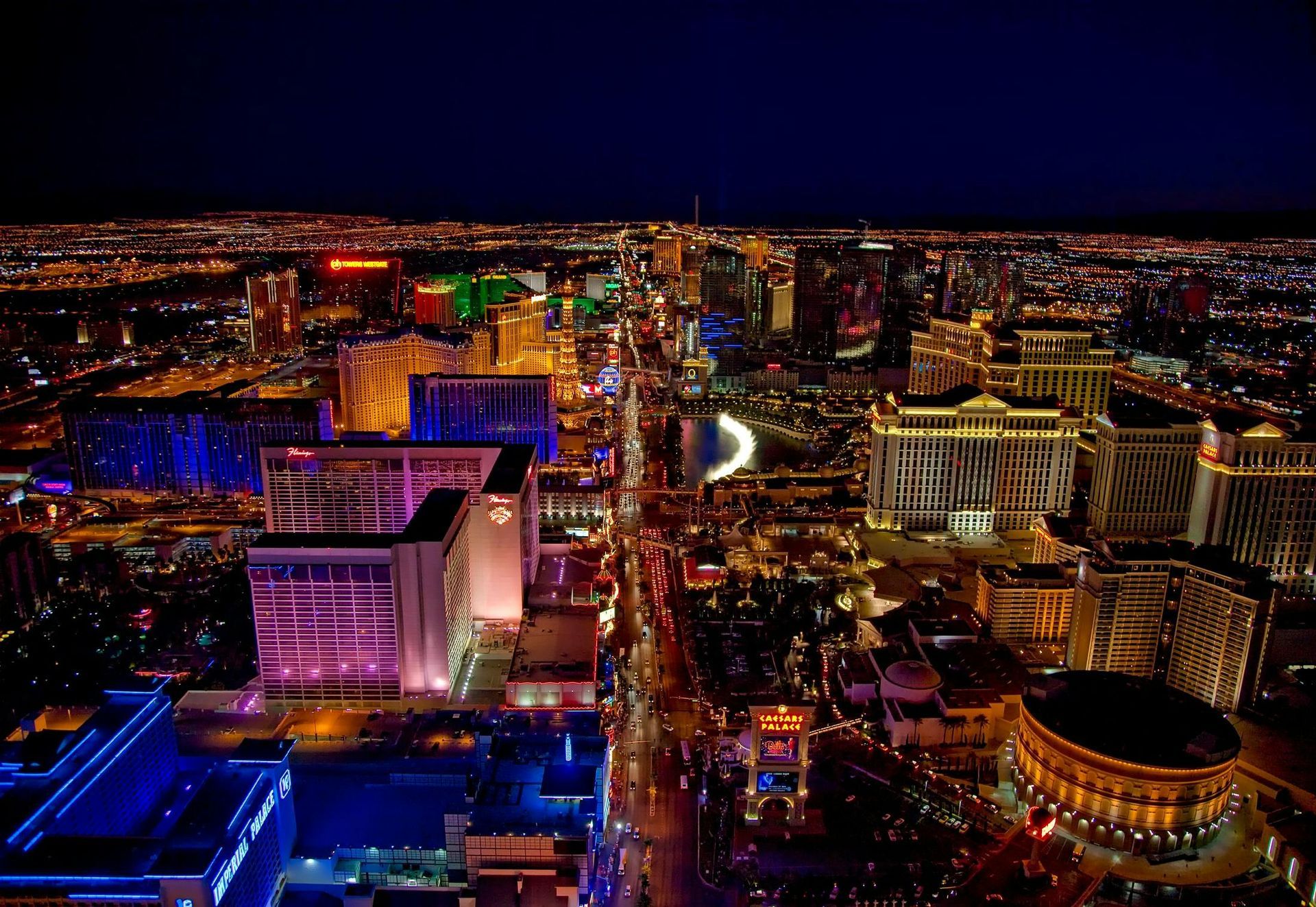
Best Time For A Road Trip From San Francisco To The Grand Canyon
The best time for a road trip from San Francisco to the Grand Canyon is from early May to mid-June. This is an ideal window as it all but ensures that you will experience a nice warm climate and all of the attractions will be open, both along the route and at your destination, while the blistering temperatures and large crowds that are common in the summer will not have set in yet.
It also avoids the height of wildfire season, which is from late August to the beginning of November each year on the west coast.
Top Attractions On A Road Trip From San Francisco To The Grand Canyon
With so many great attractions located along a road trip from San Francisco to Grand Canyon National Park, picking the best things to do and see along the way can be tough. That is why we are now going to show you some of the very best attractions on a road trip from San Francisco to the Grand Canyon, to make planning the perfect journey as simple as possible.
Oakland, California
The 8th most populous city in California, Okland sits just across the San Francisco Bay from San Francisco. Admittedly a much less famous city than San Francisco, it still boasts an incredible array of attractions like clubs, galleries, museums, theatres, and art, culture, and music venues, while being far less expensive. This makes it a great stop for anyone who wants to live it up on their vacation, without having to spend quite so much.
Modesto, California
The 19th most populous city in California, Modesto is a city best known for embracing nature and the environment, with extensive tree planting and farm to table movements encapsulating what California is best known for. The birthplace of rockabilly music in the 1930’s and famed Star Wars director George Lucas in the 1940’s, any of his fans simply can’t miss a trip to George Lucas Plaza, which boasts a bronze statue honouring both him and his movie “American Graffiti”.
With the city’s other attractions including things like the Gallo Centre For The Arts, Hawk Castle, John Thurman Field, McHenry Mansion and Museum, The State Theatre, and countless other historic buildings and neighbourhoods, as well as numerous bars, clubs, hotels, restaurants, shops, and farmers markets, there truly is something in Modesto for everyone. It even boasts a great selection of regular events too, like the monthly Art Walk and annual Architectural Festival.
Yosemite National Park
California boasts more National Parks than any other state in the U.S. at 9, and three of the most popular are located close together in the Sierra Nevada mountains in a group sometimes affectionately referred to as the “Majestic Mountain Loop”. Yosemite National Park is the northernmost park in this group, as well as the 3rd oldest and 8th most visited national park in the United States, while also being one of the most popular natural destinations on the planet.
Famed for its incredible range of stunning mountains and waterfalls, which includes one of the tallest falls in North America, the 2425 foot (739 metre) high Yosemite Falls, it also boasts countless natural beauty spots like Glacier Point, Mariposa Gove, Tioga Road, and the Tunnel View overlook, all of which people heading to the Grand Canyon are sure to enjoy.
Throw in the collection of galleries, hotels, lodges, museums, restaurants, stores, meadows and lakes in Yosemite Valley, the Wawona Pioneer Village, Sugar Pine Railroad, and a vibrant range of wildlife that includes bears, bighorn sheep, deer, and more than 250 species of birds, and Yosemite National Park more than earns its spot as one of the nation’s most visited parks.
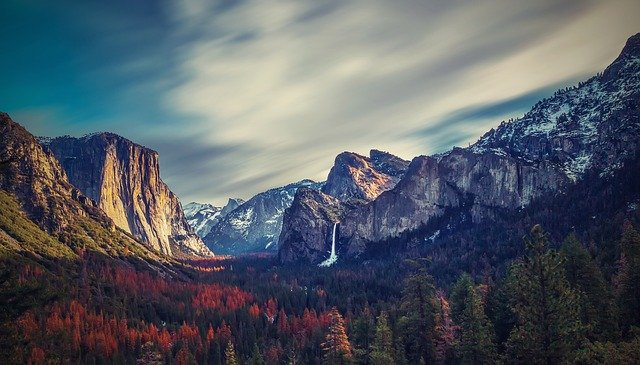
Sierra National Forest
Separating Yosemite from the two other national parks in the Majestic Mountain Loop is Sierra National Forest, which covers 1.3 million acres immediately to its south.
Bursting with towering old growth trees and mountains, beautiful lakes, remote wilderness areas, stunning panoramic vistas, and hundreds of miles of trails, it is a great destination for anyone who is interested in boating, camping, climbing, fishing, or hiking in the warmer months, while the forest’s China Peak Ski Resort makes it one of the best destinations in California for skiing during the winter.
Fresno
The 6th largest and 5th most populous city in the state, Fresno is located in central California and lies less than 90 minutes’ drive from all three of the national parks on the Majestic Mountain Loop. Boasting a fantastic array of historic buildings, galleries, museums, theatres, bars, hotels, restaurants, and shops, plus vibrant live music and performing arts scenes, it is a great place to enjoy some culture and entertainment along the journey.
Kings Canyon National Park
The youngest of the three parks on the Majestic Mountain Loop, Kings Canyon National Park borders Sierra National Forest to its south and centres around the eponymous Kings Canyon which, at 8,000 feet in depth, is one of the deepest gorges in the United States.
Featuring plenty of impressive forest areas of its own, Kings Canyon is best known for its array of stunning canyons, lakes, rivers, mountains, waterfalls, and cave systems, as well as an abundance of wildlife that features species like bighorn sheep, black bears, marmots, and more than 200 different species of birds.
It is even home to the “General Grant”, the second-largest giant Sequoia on Earth, which was branded the “Nation’s Christmas Tree” by former US President Calvin Coolidge.
Sequoia National Park
The third, final and southernmost national park in the Majestic Mountain Loop, Sequoia National Park is the second oldest national park in the nation, having been founded 6 days before Yosemite National Park, on the 25th of September 1890. Set directly on the southern border of Kings Canyon National Park, the two are the only national parks in the United States that you can drive between internally.
The attractions in Sequoia National Park centre around its towering old growth forests and the scenic hiking trails that weave through them and past sheer cliff edges, breathtaking panoramic views, and a selection of wildlife that includes bears, bighorn sheep, deer, foxes, and hundreds of different species of birds.
Other notable attractions in Sequoia National Park include the General Sherman, the Earth’s largest known living tree by volume, Mount Whitney, the highest point in the lower 48 states, Crystal Cave, Log Tunnel, Moro Rock, and the General’s Highway.
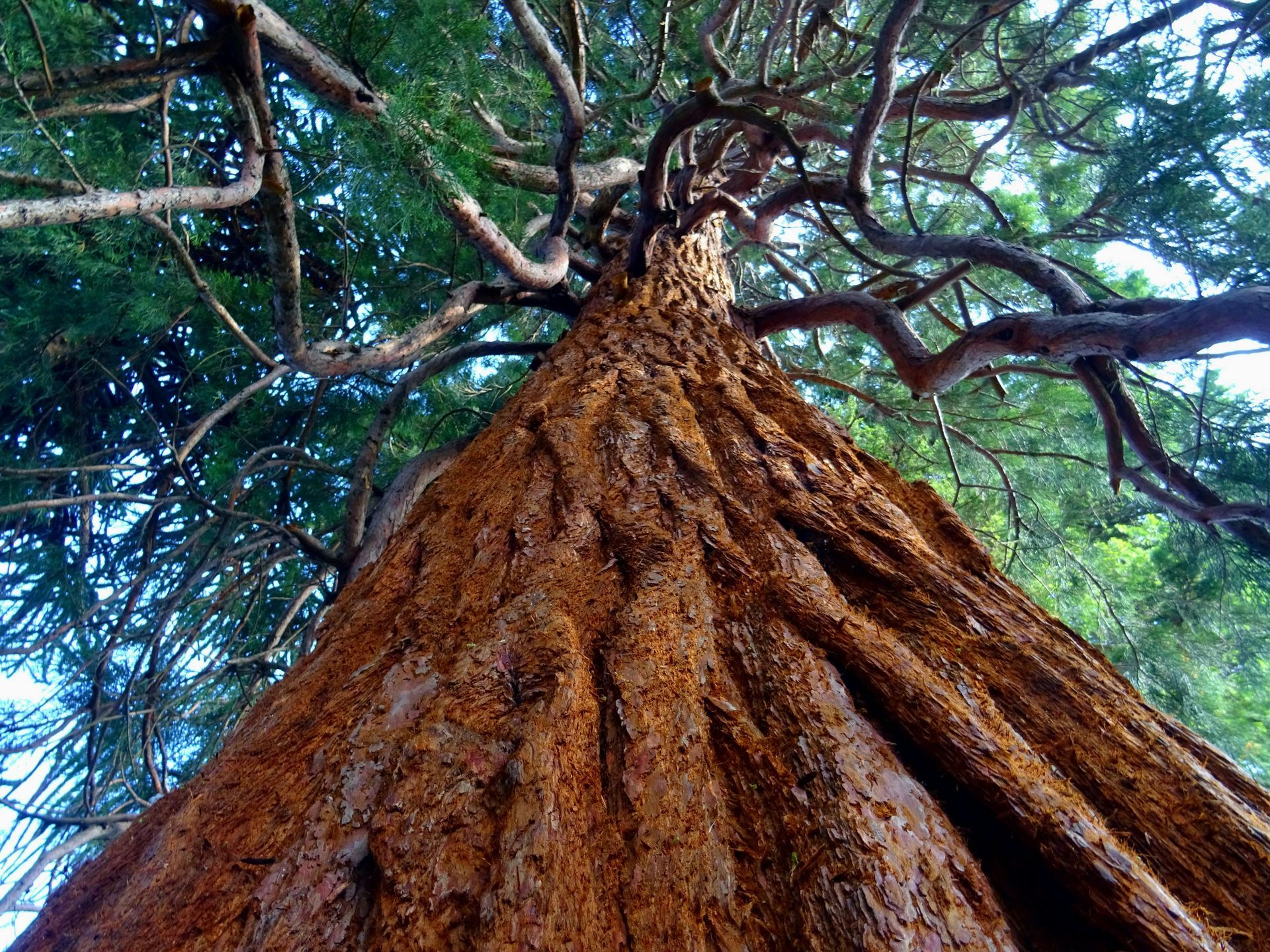
Bakersfield, California
The 5th largest and 9th most populous city in California, Bakersfield is famous for its cutting edge agriculture and energy industries, as well as its history with the music industry. Not only did it establish the Bakersfield Sound subgenre of country music in the 1950’s, but it also has links to genres like classical, jazz, rock, heavy metal, and doowop as well, most of which can still be heard at the countless live music venues found throughout the city.
Bakersfield also boasts a thriving arts and culture scene, numerous historic and iconic theatres like the Bakersfield Community Theatre, the oldest live community theatre in California, and a selection of museums, historic buildings listed as both California Historical Landmarks and on the National Register Of Historic Places, and live events, fairs, and races, so there truly is something for everyone to enjoy here.
Red Rock Canyon State Park
Red Rock Canyon State Park is a 27,000 acre park in California that was established in 1968. Its diverse landscapes are filled with canyons, deserts, and rock formations made from white clay, red sandstone, pink volcanic rocks, and brown lava, all of which are filled with a selection of wildlife such as eagles, falcons, roadrunners, hawks, coyotes, kit foxes, bobcats, lizards, mice and squirrels.
A truly stunning natural destination that is a must see for fans of geology, it is also very popular for camping, hiking, picnicking, sightseeing, equestrian activities, and even astronomy, due to its incredibly dark skies and lack of light pollution. Movie buffs may even like to see if they can spot locations from the countless productions that have been filmed here through the years.
Death Valley National Park
At 3.4 million acres, Death Valley National Park is the largest national park in the contiguous United States and 5th largest in the nation overall. Well-known for its hot and barren, yet stunning landscapes, the park holds a number of records, including featuring the lowest point in the U.S., Badwater Basin, which sits 282 feet below sea level, as well as the hottest location on Earth, Furnace Creek, which hit temperatures of 131.4 °F (56.7 °C) in 1913 and comes close to them fairly regularly.
Its vast wilderness areas, deserts, mountains, and dunes are abundant with wildlife and a popular destination for hikes, scenic drives, and photography, while this is another spot for movie buffs as countless more films have been shot here through the years.
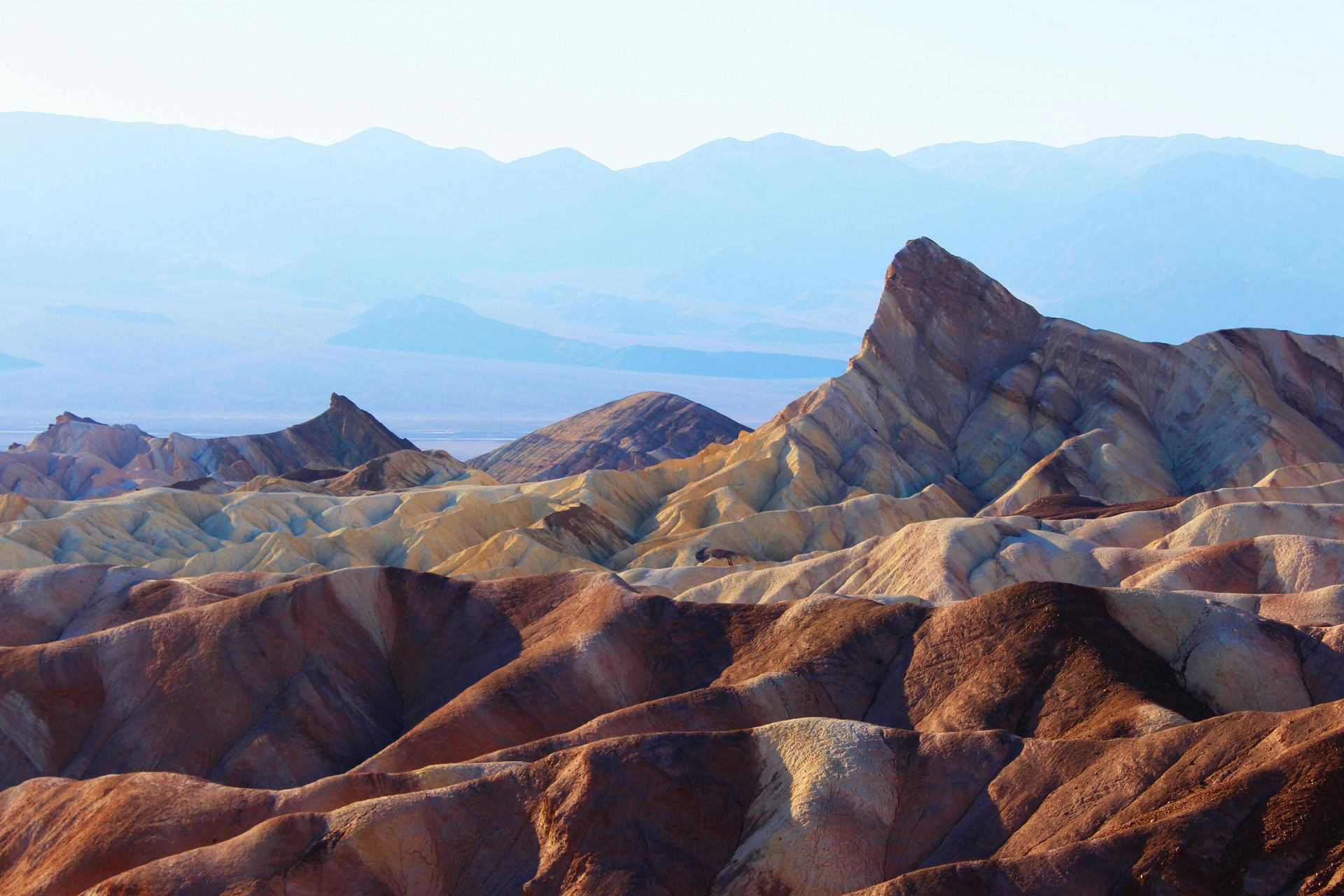
Beatty, Nevada
Known as “The Gateway To Death Valley”, Beatty sits just 5 miles from the northeast entrance to Death Valley National Park. The town is best known due to its proximity to the nearby ghost town and historic mining community of Rhyolite, but it does have plenty of its own to offer as well.
An outdoor sculpture park called the Goldwell Open Air Museum may be its top attraction, while a great range of eateries, shops, motels, and RV parks in an otherwise desolate part of the desert make it a convenient place to stop.
Other attractions in the surrounding area include Yucca Mountain, which boasts some incredible views and landscapes, Bailey’s Hot Springs & Bathhouses, and the Nevada Test Site, a former testing site for nuclear weapons that features guided tours around recreations of towns and communities in the middle of the desert.
The Hoover Dam
Built between 1931 and 1936, the Hoover Dam sits around 30 miles to the west of Las Vegas, right on the border with Arizona in the Black Canyon of the Colorado River. A concrete gravity-arch dam known for its iconic architecture, infamous construction cycle, and sheer size, it is one of the largest dams in the world, with a height of 726 feet (221 metres) and a length of 1,244 feet (379 metres).
It holds the largest reservoir in the United States, Lake Mead, and fuels a hydroelectric plant that is responsible for producing 29% of the electricity for southern California, 23% of the electricity for Nevada, and 19% of the electricity for Arizona. Visitors can take in stunning views of both the dam and its surroundings, enjoy guided tours, and read informational plaques explaining its history and memorials dedicated to those who lost their lives while building it.
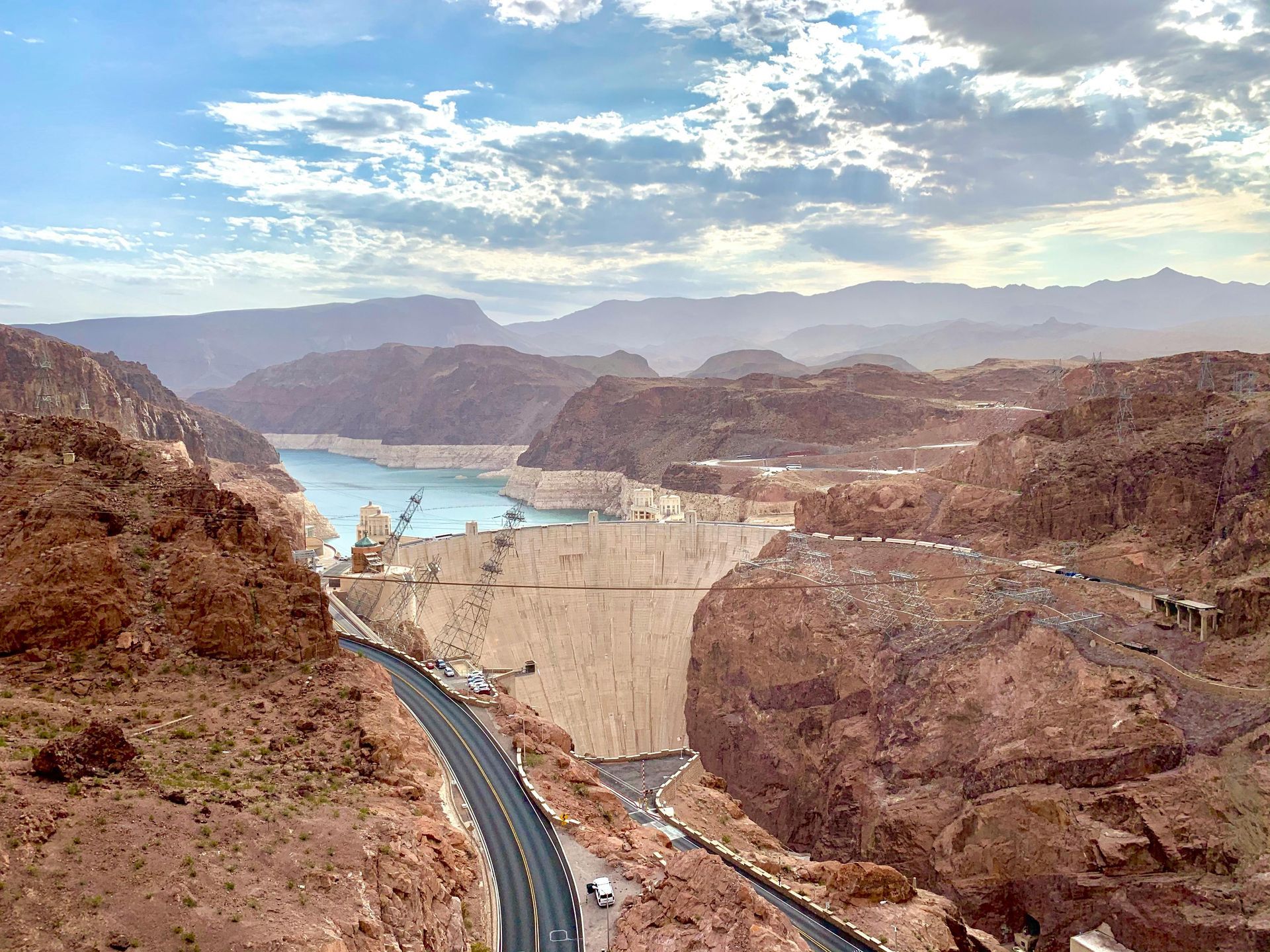
Kingman, Arizona
A historic town in Arizona that is situated on the infamous Route 66, Kingman boasts a number of attractions dedicated to the history of both the area and the road on which it lies. Its top tourist attractions include the Mohave Museum Of History And Arts, the Kingman Railroad Museum, the Arizona Route 66 Museum, and a locomotive park with a 1920’s steam engine.
Seligman, Arizona
Seligman is another Arizona town located along Route 66 that embraces the history of the famous road. The Seligman Commercial Historic District was designated a historic highway by Arizona in 1978 and added to the National Register Of Historic Places in 2005. It features various businesses and buildings that date back as far as 1903, including a gas station, general store, post office, pool hall, and theatre.
With some of these historic buildings still open today and others preserved as museums, as well as various themed bars, shops, and restaurants that equally embrace the town’s history, it is a great place to stop for anyone who is interested in “the mother road” of America.
Williams, Arizona
The last of the three Route 66 towns on our journey and perhaps the most famous, Williams, Arizona is brimming with Americana style shops and restaurants, all of which are themed on or date back to the early 1900’s.
With attractions like Pete’s Route 66 Gas Station Museum, which features a museum and collection of vintage vehicles, the Route 66 Zipline that lets you fly over Route 66, and Bearizona Wildlife Park, where you can see bears, bison, mountain goats, birds of prey and more, there is plenty in Williams to keep everyone occupied and entertained. In fact, it has so much to offer we even wrote an entire article dedicated to the town.
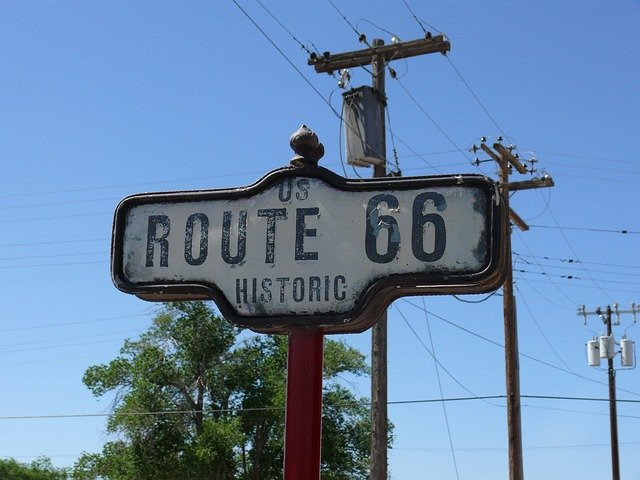
Conclusion
A road trip from San Francisco to the Grand Canyon is an incredible journey that takes you through one of the most stunning parts of the United States, to one of its most iconic natural attractions. With such a large amount of driving along the way, it is certainly not a trip that is for the faint of heart. However, this guide should have given you all you need to make sure it is an enjoyable and memorable one, filled with fantastic experiences at every turn.
All you have left to do now is start getting everything from your hotels to your activities booked, so you can start looking forward to experiencing it all for yourself.
